Advanced seal designs that prevent wear, increase service life, and reduce friction can ensure uptime in pitch cylinders and brakes.
Eric Bucci, Global Technical Manager, Energy and Oil & Gas, Trelleborg Sealing Solutions
Today’s wind turbines are highly technical precision machines, utilizing the latest digital and computer technology to maximize the wattage from every wind gust. An average size two-megawatt wind turbine can generate enough electricity to supply about 1,000 households. Running 24/7 with an operational expectancy of 98% over 20 years, wind turbines function in extremely dynamic environments where reliability is paramount.
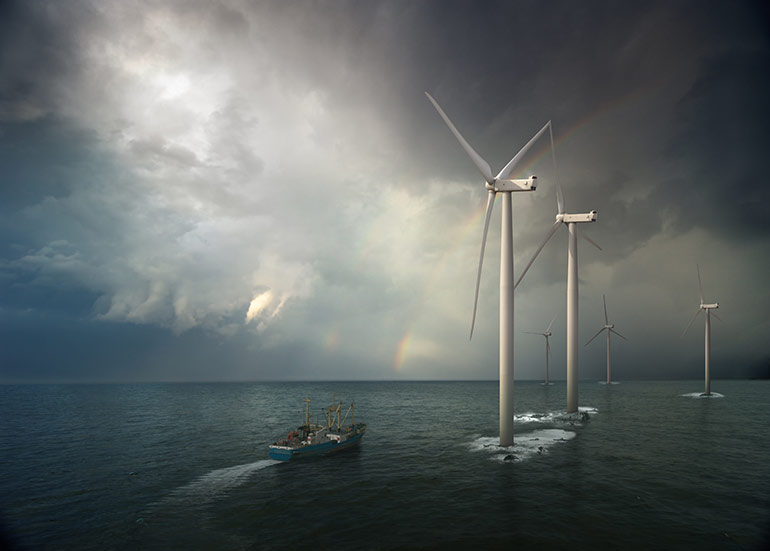
With over 350,000 wind turbines currently in use globally, wind continues to be one of the fastest growing forms of renewable energy. In 2021, 93.6 gigawatts (GW) of new installations brought global cumulative wind power capacity to 837 GW, showing year-over-year growth of 12%1. The 2022 Global Wind Report notes that 557 GW of new capacity will be added in the next five years – more than 110 GW of new installations each year until 20262.
A clean gust to zero
Clean electricity produced by wind power plays an important role in the future of sustainable energy. Wind turbines are key in working toward the International Energy Agency’s goal to reach Net Zero Emissions by the year 2050. This means all electricity produced will have zero carbon emissions and will help limit the global temperature rise to 1.5° C3.
Contributing to increased wind energy and sustainability, onshore wind is becoming increasingly popular as generation costs decrease. Close-to-shore offshore wind is receiving significant investment as well since turbines can be larger in size and generate more power. Floating offshore wind farms constructed on platforms tethered to the seabed can potentially allow for an even greater number of turbines in deeper waters further from shore.
Hitting the perfect pitch
As wind turbines have increased in size so has their output capability with pitch-controlled systems becoming the standard choice for efficiency gains.
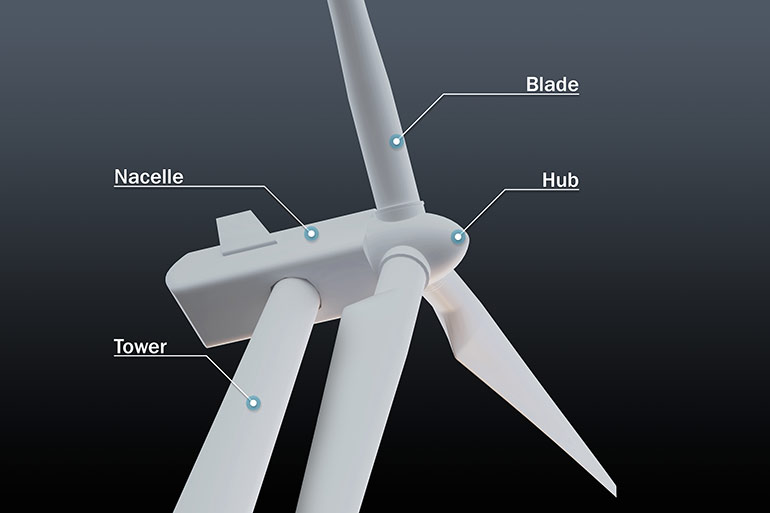
With shaped blades that adjust and rotate to maximize productivity, active pitch control enables configuration of a wind turbine to operate efficiently at any wind speed. By actively managing the blade angle, operators can optimize the rotational energy from the wind, no matter the wind speed.
Housed within the wind turbine pitch actuator, a hydraulic pitch cylinder controls movement, slightly rotating the turbine’s rotor blades and adjusting the pitch for changing wind speeds. If wind speeds are slow, the pitch cylinder adjusts the blade angle to increase the blade surface area to capture the wind energy. As wind speeds increase, blades are angled to reduce the amount of surface area in contact with the wind, preventing excessive rotary speeds to protect system integrity. Drag at higher wind speeds also adversely affects system efficiency and changing the blade pitch can dramatically improve performance.
Challenging conditions
As wind turbines operate continuously, sealing requirements are extreme. The hydraulic system within the pitch cylinder uses a complex seal configuration to meet the dynamic demands of an active pitch control system. The sealing system must be capable of operating at pressures of 3,625 psi/250 bar with constant linear pressure on the rod and piston seals and differential side loads that control positioning.
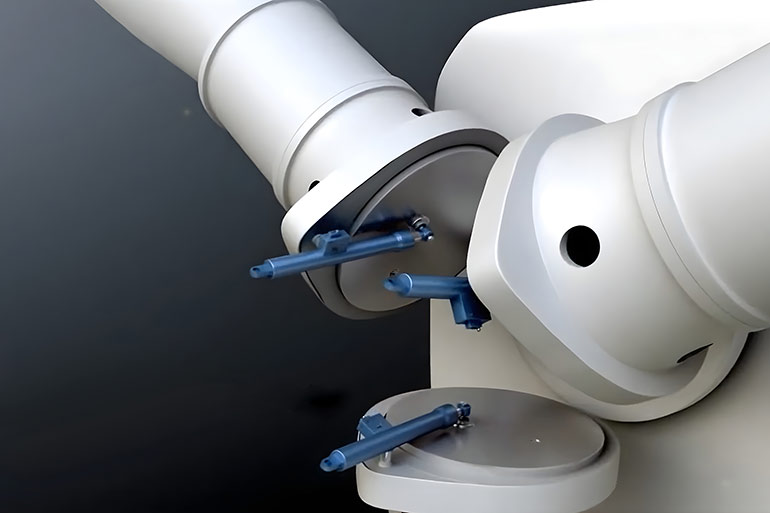
While holding a turbine blade at an angle, on extension and retraction of the pitch cylinder rod, the sealing system must not exhibit any drift or slippage. This can result in the blade pitch deteriorating and drastically reducing efficiency. Seals must also easily release their holding position with minimum vibration and friction, or stick slip, and move in a smooth linear fashion. This requires low friction sealing materials.
In addition, seals must demonstrate minimal wear characteristics and facilitate dynamic movement that is continuous in short strokes. These, which occur on average 900 times per hour, can cause particularly aggressive wear as the seal cannot fully flex and relieve stress as it would in long stroke applications.
Operating companies require 20 plus years of service life for wind turbines while avoiding costly unscheduled maintenance. Standard hydraulic cylinder sealing materials may be insufficient; therefore, low-wear materials, such as polytetrafluoroethylene (PTFE) based compounds filled with anti-wear agents and a hard durometer, stable urethane, are needed to extend service life.
Standard polymer-based wear rings may also be incapable of reaching the desired extended life cycles. As an alternative, wear rings made of composite materials, withstand high loads and resist wear.
Seals used in wind turbines must be able to withstand cold temperatures as low as –22°F/–30°C as a standard, and even lower, down to –40°F/–40°C in very cold climates. When temperatures drop below these levels, the oil inside the cylinder can no longer work properly and requires warming with heating elements. Maximum temperature resistance for seals in wind turbine hydraulic cylinders is 140°F/60 °C. Above this, cooling systems are necessary so the oil does not become stressed, decreasing viscosity and carbonizing. In addition, actuator seals must withstand demanding conditions including high humidity, dirt particles, salt spray, and the rigors of wind and rain.
Optimized performance
Within a pitch cylinder is a complex arrangement of seals ranging from simple elastomer O-rings to advanced PTFE-based and engineered plastic designs. The seals within the hydraulics are integral to their performance and optimizing their life is critical to the long-term effectiveness of the total system.
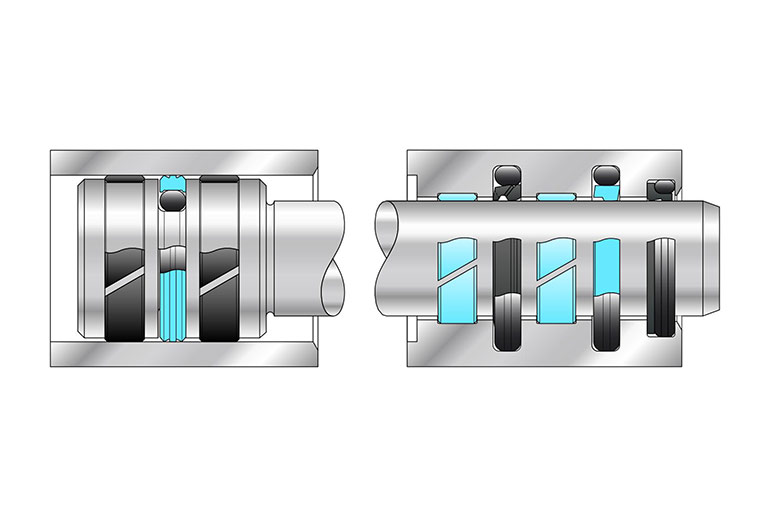
An example of a sealing arrangement for a wind turbine is pairing Trelleborg’s Turcon Stepseal V LM, a single-acting O-ring activated seal made from PTFE-based materials engineered for dynamic applications, with Trelleborg’s composite Orkot Slydring, which prevents metal-to-metal contact between the piston and rod. Specially engineered configurations enhance lubrication, optimize friction characteristics, and maximize service life, while preventing any external oil leakage.
To further extend seal life and performance, operators should incorporate an advanced corrosion-resistant coating to all dynamic seal running surfaces. Anti-corrosion coatings reduce the possibility of rust and pitting associated with ferrous metal surfaces. Polished to a seal supplier’s surface finish recommendation, these will provide smooth hardware running surfaces to lower friction, reduce wear, and extend overall system reliability.
Pump the brakes
The maximum wind speed turbines can currently safely withstand is 55 miles/ 90 kilometers per hour. Above this, turbine blades can rotate too quickly and break apart causing catastrophic turbine failure. When wind speeds reach unsafe operating conditions and there is a risk of turbine overspeed, such as during severe storms, idling of the turbine prevents damage or failure. The main brake, often a hydraulic disc brake, assists in bringing the rotors to a standstill.
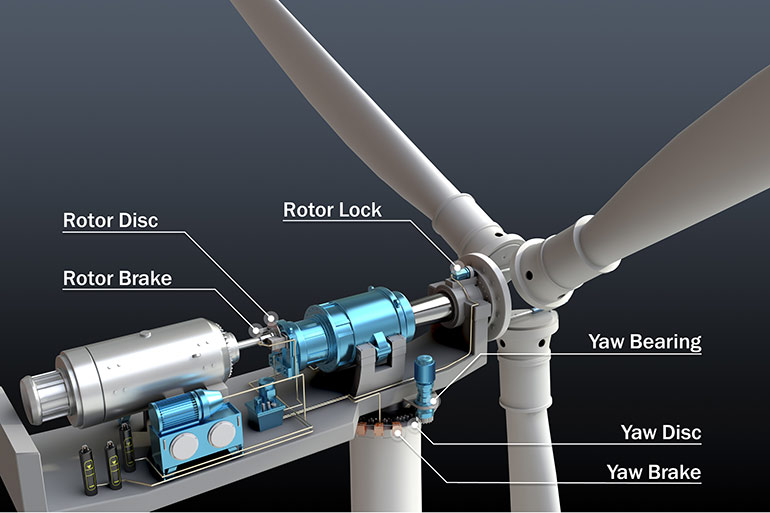
Equipped with plunger cylinders to hold the turbine tower in position, the hydraulically powered yaw or azimuth brake keeps the nacelle positioned against the wind. These systems typically use rod seals that have outstanding wear and extrusion resistance and long service life. For instance, Trelleborg’s Zurcon U-Cup RU9 meets these requirements while being compatible with virtually all media and having a wide operating temperature range and low friction characteristics.
Conclusion
Optimizing hydraulic sealing can have a significant impact on wind turbine efficiency. By selecting reliable seals that prevent wear, increase service life, and reduce friction, operators can achieve technological advances in pitch cylinders and brakes, leading to reduced downtime and maintenance costs while ultimately improving energy output. As the global demand for clean energy continues to grow, wind power is poised to play an increasingly important role in meeting this need. By embracing innovative technologies and best practices, operators can maximize the potential of wind energy and pave the way for a more sustainable future.
Trelleborg Sealing Solutions
trelleborg.com
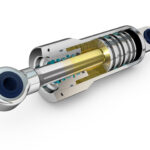
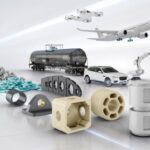
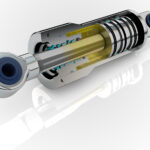
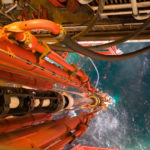


Consider that hydraulics is a rather mature technology, I wonder just who this article was aimed towards. Certainly not any actual engineers who might be involved with the design of the hydraulics involved,
So what was the purpose and the intended readership of the article???